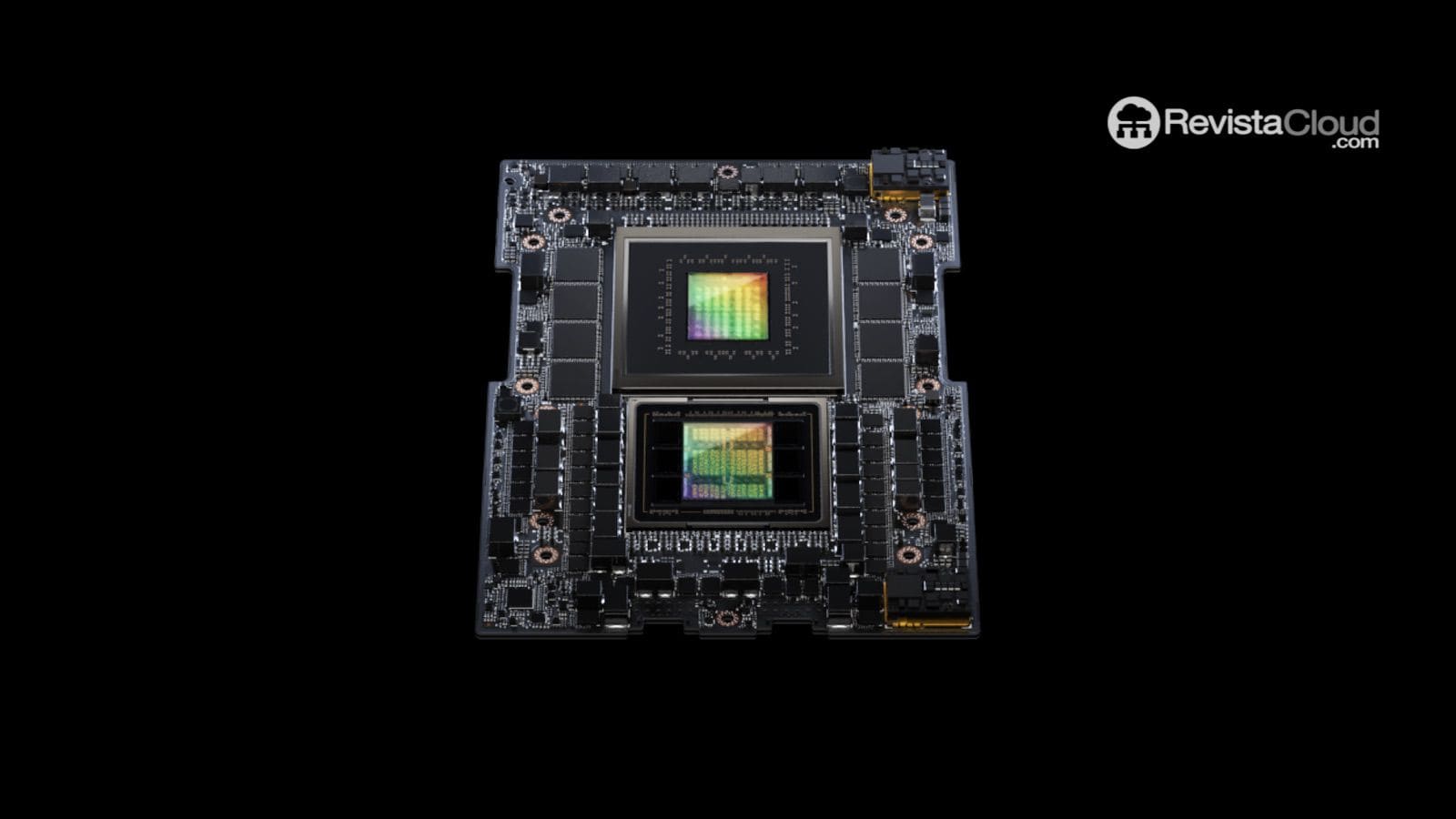NVIDIA is finalizing details for a new graphics processor from the Blackwell family, specifically designed for the Chinese market. The chip, preliminarily named B30A, would replace the current Nvidia H20, based on the Hopper architecture, and offer superior performance, though still below the flagship Blackwell models like B200 and B300.
According to information leaked by Reuters, the B30A would comply with U.S. export regulations that restrict the computational capabilities of GPUs shipped to China. Recently, the Trump administration reiterated that any export agreement involves “cut-down” versions of the most advanced chips, with 30% to 50% less power than models intended for the rest of the world.
The president confirmed in a press conference that the B30A will be an “unmodified version” of Blackwell high-end accelerators, indicating that the H20 is already considered obsolete in a market still demanding large-scale AI and HPC solutions.
Although NVIDIA has yet to reveal the final specifications, leaks suggest a monolithic (single-die) design, differing from the dual-die B200/B300. This means all main functions are integrated into a single silicon wafer, reducing raw performance but simplifying manufacturing.
Comparison:
Blackwell Ultra B300:
- Up to 15 PetaFLOPs FP4.
- 288 GB of HBM3e memory.
- Dual chiplet with ultra-fast interconnection.
Blackwell B30A (estimated):
- Approximately half the performance of B300.
- Up to 144 GB of HBM3e.
- NVLink for accelerated interconnection.
Hopper H20 (to be replaced):
- 96 GB of memory.
- 41% fewer cores and 28% less performance than the H100.
If confirmed, the B30A would represent a significant leap over the H20 but still lag behind the reference Blackwell models.
This development aligns with strong Chinese market interest in viable solutions for AI, big data, and supercomputing. Following U.S. restrictions on exporting advanced chips, companies like Huawei have accelerated their own developments, but NVIDIA’s reliance remains crucial for a large part of China’s tech industry.
Initial samples of the B30A could reach Chinese clients as soon as next month, according to sources cited by Reuters. This suggests that NVIDIA has already made a preliminary agreement with local partners to secure supply before new regulations take full effect.
The launch of the B30A is about more than just technology; it’s a geopolitical move:
- The U.S. aims to contain China’s AI technology growth through export controls based on computing power.
- China requires advanced chips for generative AI, robotics, and defense projects.
- NVIDIA navigates a delicate line: maintaining access to a billion-dollar market while avoiding U.S. regulatory violations.
Meanwhile, competitors like AMD and domestic manufacturers such as Huawei and Biren continue working on alternative designs to reduce technological dependence.
FAQ
What is the NVIDIA Blackwell B30A?
It’s a new graphics chip tailored for the Chinese market, based on the Blackwell architecture, intended to replace the current H20.
Why does the B30A have less power than the B300?
Because it’s designed to meet U.S. export restrictions that limit the computational capacity of chips sent to China.
What improvements does it offer over the H20?
The B30A is expected to have more memory (up to 144 GB HBM3e vs. 96 GB) and significantly higher performance, though it won’t match the flagship Blackwell models.
When will it hit the market?
Initial samples are expected to be delivered to Chinese clients starting next month.

